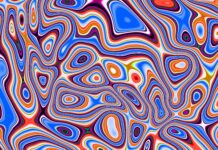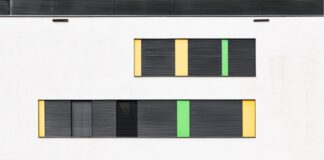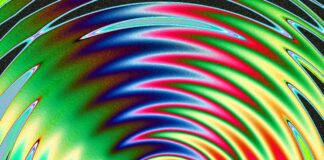In today’s fast-paced digital landscape, understanding AI in the fashion advertising trends is no longer optional—it’s essential for brands aiming to stay relevant and competitive. From hyper-personalized campaigns to predictive analytics, AI in the fashion advertising trends is reshaping how fashion brands connect with consumers, optimize their messaging, and measure impact. Whether you’re a marketer, designer, or strategist, embracing AI in the fashion advertising trends will help you unlock new levels of creativity, precision, and performance.
1. AI Is Driving Hyper-Personalization in Fashion Ads
One of the most transformative impacts of AI in fashion advertising is the ability to deliver hyper-personalized content. AI algorithms analyze consumer data—purchase history, browsing behavior, social media activity, and even sentiment—to craft ads tailored to individual preferences. This level of personalization increases engagement, click-through rates, and conversions. Instead of generic campaigns, consumers now receive ads that feel curated just for them, enhancing brand loyalty and emotional connection.
2. Predictive Analytics Are Optimizing Campaign Timing and Targeting
AI enables brands to predict when and where their ads will perform best. By analyzing historical data, seasonal trends, and external factors like weather or cultural events, AI can forecast optimal campaign windows and audience segments. This ensures that fashion ads reach the right people at the right time, maximizing ROI. Predictive analytics also help brands allocate budgets more effectively, reducing waste and improving efficiency.
Emotional AI—technology that interprets human emotions—is entering fashion advertising. AI can analyze facial expressions, voice tone, and written language to gauge emotional responses to ads. This helps brands craft messaging that resonates on a deeper level. Emotional AI also enables adaptive content that changes based on viewer mood, creating more empathetic and engaging advertising experiences.
3. Visual Recognition Is Enhancing Creative Strategy
Fashion is a visual industry, and AI is revolutionizing how brands approach creative design. Visual recognition tools analyze thousands of images to identify which styles, colors, and compositions resonate most with target audiences. AI can even generate new creative concepts based on successful patterns, streamlining the design process and boosting campaign effectiveness. This data-driven approach ensures that visuals are not only beautiful but also strategically impactful.
4. Conversational AI Is Transforming Customer Engagement
AI-powered chatbots and voice assistants are becoming integral to fashion advertising. These tools engage consumers directly within ads, offering product recommendations, answering questions, and guiding users through the purchase journey. Conversational AI operates 24/7, supports multiple languages, and learns from each interaction to improve future responses. This creates a seamless, personalized experience that drives conversions and builds trust.
Emotional AI—technology that interprets human emotions—is entering fashion advertising. AI can analyze facial expressions, voice tone, and written language to gauge emotional responses to ads. This helps brands craft messaging that resonates on a deeper level. Emotional AI also enables adaptive content that changes based on viewer mood, creating more empathetic and engaging advertising experiences.
5. AI Is Powering Ethical and Inclusive Advertising
Consumers are increasingly demanding ethical and inclusive representation in fashion ads. AI helps brands meet these expectations by analyzing campaign content for diversity, tone, and cultural sensitivity. Machine learning models can flag potentially problematic imagery or language before ads go live. AI also identifies gaps in representation and suggests ways to make campaigns more inclusive, fostering stronger emotional connections with diverse audiences.
6. Influencer Marketing Is Being Refined Through AI Insights
Influencer marketing is a staple in fashion advertising, and AI is making it smarter. Brands use AI to identify influencers whose audiences align with their target demographics, analyze engagement metrics, and predict campaign performance. AI also monitors real-time impact across platforms, allowing brands to adjust strategies on the fly. This ensures that influencer collaborations are authentic, effective, and aligned with brand values.
7. AI Is Enhancing Cross-Platform Integration
Fashion consumers interact with brands across multiple platforms—Instagram, TikTok, websites, apps, and more. AI ensures that advertising campaigns are cohesive and consistent across these touchpoints. By analyzing user behavior across channels, AI delivers unified messaging that adapts to each platform’s format and audience. This cross-platform intelligence enhances brand recall and creates a seamless consumer experience.
8. Real-Time Optimization Is Improving Ad Performance
AI enables real-time optimization by continuously analyzing metrics like impressions, clicks, conversions, and bounce rates. If an ad isn’t performing, AI can automatically adjust targeting, creative elements, or placement to improve results. This agility ensures that campaigns remain effective throughout their lifecycle and adapt to changing consumer behavior. Real-time optimization turns fashion advertising into a dynamic, responsive strategy.
9. Emotional AI Is Influencing Ad Design and Messaging
Emotional AI—technology that interprets human emotions—is entering fashion advertising. AI can analyze facial expressions, voice tone, and written language to gauge emotional responses to ads. This helps brands craft messaging that resonates on a deeper level. Emotional AI also enables adaptive content that changes based on viewer mood, creating more empathetic and engaging advertising experiences.
10. Post-Campaign Analysis Is Becoming More Insightful
The value of AI doesn’t end when a campaign concludes. Post-campaign analysis powered by AI offers deep insights into performance, audience behavior, and ROI. Brands can understand which elements drove engagement, which demographics responded best, and where improvements are needed. These insights inform future campaigns, making each iteration smarter and more effective. AI turns data into actionable strategy, closing the loop between execution and optimization.
Emotional AI—technology that interprets human emotions—is entering fashion advertising. AI can analyze facial expressions, voice tone, and written language to gauge emotional responses to ads. This helps brands craft messaging that resonates on a deeper level. Emotional AI also enables adaptive content that changes based on viewer mood, creating more empathetic and engaging advertising experiences.
Conclusion
The integration of AI in the fashion advertising trends is not just a technological upgrade—it’s a strategic revolution. From personalization and predictive analytics to ethical representation and emotional intelligence, AI in the fashion advertising trends is redefining how fashion brands connect with consumers. Embracing AI in the fashion advertising trends means unlocking new levels of creativity, efficiency, and impact. As the industry continues to evolve, those who harness the power of AI will lead the way into a smarter, more inclusive, and emotionally resonant future of fashion advertising.














